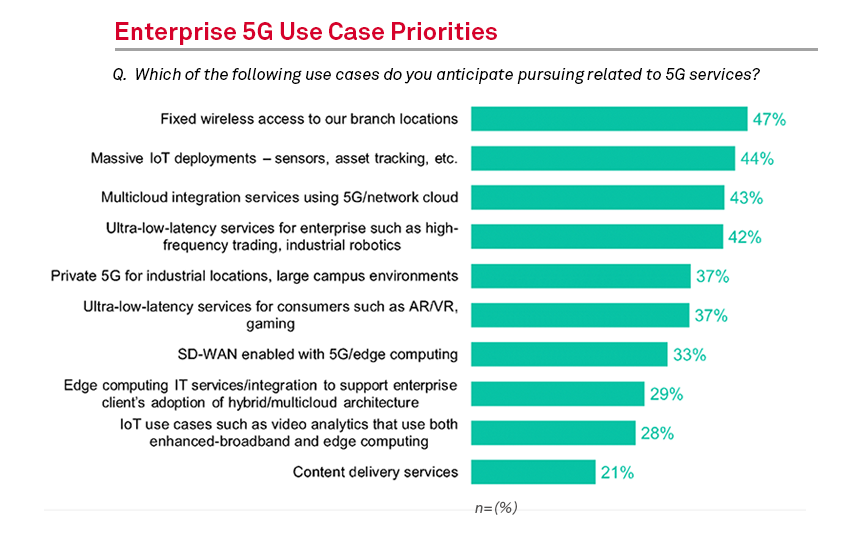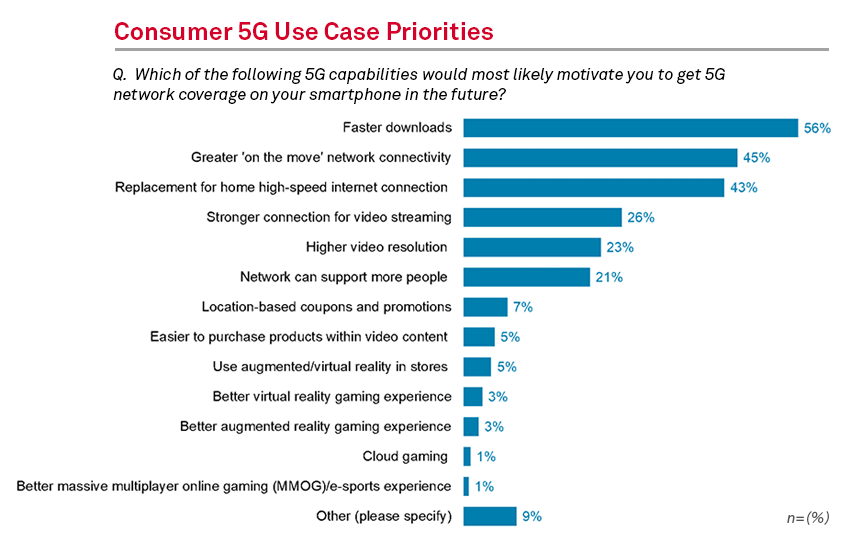
As 5G continues to be implemented around the world, it may be useful to understand what makes 5G unique compared with its predecessors. This fifth generation is the first mobile generation designed for the needs of enterprise and machine connectivity, appealing to those with wide physical coverage requirements and mission-critical, low-latency applications. 5G technology is widely recognized as offering faster speeds, but a deeper dive into the technology and its use cases illustrates the unique capabilities it can bring.
A Deep Dive into 5G Basics
After the evolution of 1G to 4G (LTE), 5G is the fifth generation of wireless cellular technology to emerge. The technology, breaking away from its consumer-oriented predecessors, enables previously impossible use cases that can be grouped into enhanced mobile broadband (eMBB), ultra-reliable low-latency communications (URLLC) and massive machine-type communications (mMTC).
5G is set to meet the more stringent requirements of businesses, which include faster speeds, lower latency and increased scalability. For example, the peak speed of 5G could be as high as 20Gbps compared with 4G’s roughly 1Gbps.
The major architectural pieces of a mobile network are known as radio access locations (RANs), which are the radio antennas and base stations that send/receive radio frequency (RF) data from surrounding devices and then backhaul the data ‘core’ to its destination or provide network services, subscriber management and network applications such as voice and collaboration. The initial wave of deployments for 5G radio infrastructure (5GNR) were attached to existing LTE cores so operators could achieve a first-mover advantage without having to implement a new core network. This version of deployment is called non-stand-alone (NSA).
In the next phase of 5G rollout, many operators will move to 5G ‘stand-alone’ core (5GSA), which introduces a microservices-based, cloud-native core architecture. After the ratification of certain standards, this technology will become more capable of using advanced techniques such as network slicing and MEC to deliver advanced services.
Wavelengths and Standards
Another defining characteristic of 5G is the wave spectrum utilization. 5G takes advantage of millimeter wave (>6GHz) to deliver up to 20 times more bandwidth per channel compared with 4G’s wave spectrum (e.g., 700MHz).
Due to its smaller size, mmW cannot travel as far as traditional radio waves, which results in smaller, more densely populated nodes. This densification could potentially require a doubling of RANs, which will require operators to overcome different hurdles such as cost and complexity as well as local siting and licensing processes.
Like previous mobile generations, 5G and its capabilities will be defined by standards. The 3rd Generation Partnership Project (3GPP) develops technical specifications for cellular networks through releases that are defined, debated and refined by 3GPP members. Release 15 officially introduced the original specifications of 5G, but the innovative elements of 5G for enterprises will come with Release 16 and 17. These releases will address capabilities and use cases such as mMTC and URLLC. Release 16 was completed and sent out in July 2020; however, Release 17 is facing delays due to the pandemic and is set for publication in 2022.
Use Cases: Enterprises vs. Consumers
The most interesting areas for 5G are in the new use cases that are enabled through the technology.
These new experiences span industry verticals including healthcare (e.g., remote monitoring, telehealth), transportation (e.g., autonomous vehicles and drones), manufacturing (e.g., remote control of industrial machinery, autonomous mobile robots, predictive maintenance) and consumer applications (e.g., e-sports, AR/VR, connected cars).
In two separate studies, both conducted by 451 Research, the use cases between enterprises and consumers varied based on their needs.

One study found that enterprises are particularly interested in leveraging 5G as a primary or backup connectivity option for their branch offices and to support IoT and multicloud connectivity requirements, while the second study found that consumers are more interested in the faster download speeds and greater ‘on the move’ network connectivity that is offered by 5G technology.

Want insights on emerging technology trends delivered to your inbox? Join the 451 Alliance.
